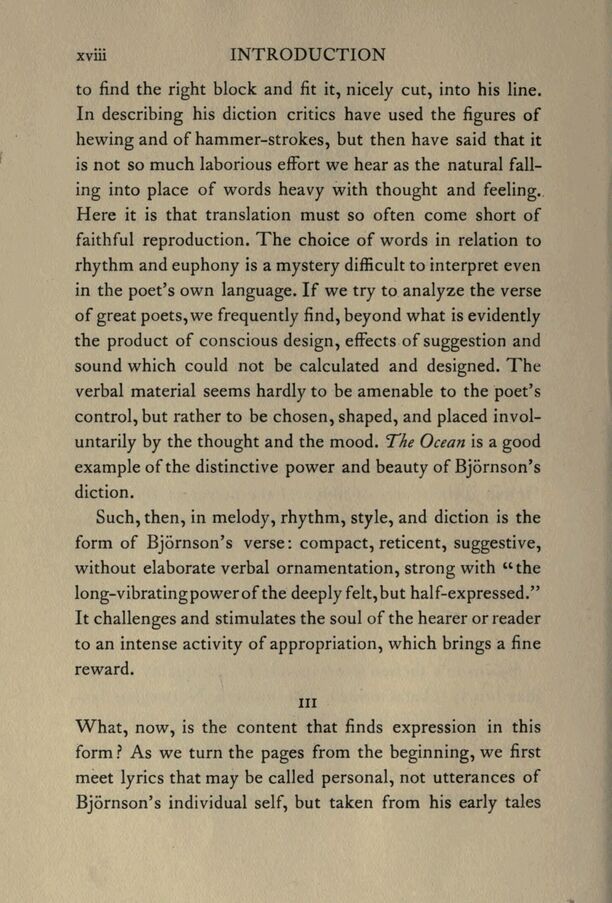
Full resolution (JPEG) - On this page / på denna sida - Sidor ...

<< prev. page << föreg. sida << >> nästa sida >> next page >>
Below is the raw OCR text
from the above scanned image.
Do you see an error? Proofread the page now!
Här nedan syns maskintolkade texten från faksimilbilden ovan.
Ser du något fel? Korrekturläs sidan nu!
This page has never been proofread. / Denna sida har aldrig korrekturlästs.
xviii INTRODUCTION
to find the right block and fit it, nicely cut, into his line.
In describing his diction critics have used the figures of
hewing and of hammer-strokes, but then have said that it
is not so much laborious effort we hear as the natural fall-
ing into place of words heavy with thought and feeling..
Here it is that translation must so often come short of
faithful reproduction. The choice of words in relation to
rhythm and euphony is a mystery difficult to interpret even
in the poet’s own language. If we try to analyze the verse
of great poets, we frequently find, beyond what is evidently
the product of conscious design, effects of suggestion and
sound which could not be calculated and designed. The
verbal material seems hardly to be amenable to the poet’s
control, but rather to be chosen, shaped, and placed invol-
untarily by the thought and the mood. The Ocean is a good
example of the distinctive power and beauty of Bjornson’s
diction.
Such, then, in melody, rhythm, style, and diction is the
form of Bjornson’s verse: compact, reticent, suggestive,
without elaborate verbal ornamentation, strong with “the
long-vibrating power of the deeply felt, but half-expressed.”
It challenges and stimulates the soul of the hearer or reader
to an intense activity of appropriation, which brings a fine
reward.
II
What, now, is the content that finds expression in this
form? As we turn the pages from the beginning, we first
meet lyrics that may be called personal, not utterances of
Bjérnson’s individual self, but taken from his early tales
<< prev. page << föreg. sida << >> nästa sida >> next page >>